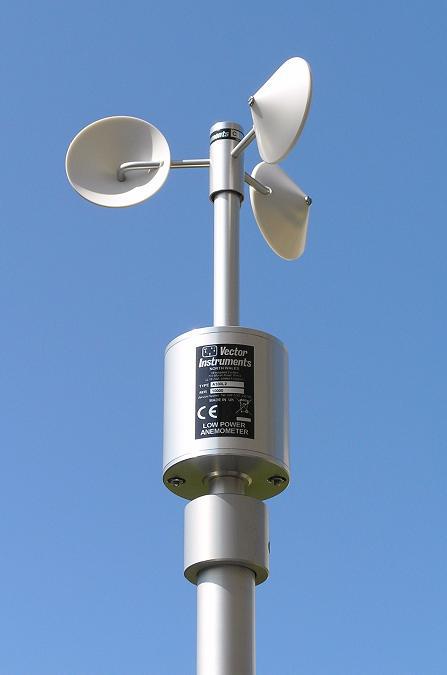Anemometers Revealed: Recognizing Their Value in Ecological Surveillance and Precaution
The role of anemometers in environmental monitoring and safety and security measures is typically taken too lightly, yet their value is obvious. These tools have a long history rooted in clinical inquiry and technical improvements, advancing to become crucial devices in various areas. From weather forecasting to air travel safety and security, anemometers play an important duty in offering accurate information that informs decision-making procedures and improves total safety. Recognizing the intricacies of anemometers unveils a world of important understandings that are basic to our understanding of the environment and the actions we take to make certain safety.
Background of Anemometers
The development of anemometers can be traced back to the old civilizations where primary wind measuring devices were very first utilized. One of the earliest known anemometers was the hemispherical mug anemometer created by Leon Battista Alberti in the 15th century.
In the 18th century, the renowned researcher John Thomas Romney Robinson presented the Robinson anemometer, which featured 4 hemispherical cups mounted on horizontal arms that prolonged from a central axis. This style became a standard in meteorological measurements because of its accuracy and integrity. Over the years, developments in innovation caused the development of even more contemporary anemometers, including ultrasonic anemometers and laser Doppler anemometers, using enhanced accuracy and performance in gauging wind rate and instructions. The history of anemometers showcases a remarkable journey of advancement and development in the area of weather forecasting.
Kinds of Anemometers
Throughout the area of meteorology, various sorts of anemometers have been developed to properly determine wind speed and direction. The most usual kind is the cup anemometer, which consists of 3 or four mugs installed on horizontal arms that rotate with the wind. As the cups rotate, the rate at which they rotate is straight proportional to the wind rate. One more commonly used kind is the vane anemometer, which features a tail or fin that straightens itself with the wind instructions. This placement enables the device to identify the wind instructions. Sonic anemometers use ultrasonic signals to gauge wind speed and instructions precisely. They are generally utilized in research study applications as a result of their high accuracy. Hot-wire anemometers run based on the concept that the cooling effect of wind on a warmed wire is proportional to the wind rate. These anemometers appropriate for gauging low wind rates with high accuracy. Each sort of anemometer has its staminas and is chosen based upon the specific needs of the tracking task available.
Applications in Meteorology
Having gone over the numerous kinds of anemometers utilized in weather forecasting for measuring wind speed and direction, it is click to find out more important to discover their sensible applications in the field. Anemometers play a critical function in meteorology by offering accurate and real-time data on wind conditions (anemometer). Meteorologists use anemometers to keep track of wind speed and direction to anticipate weather condition patterns, concern cautions for serious weather events like twisters, storms, and hurricanes, and examine weather for aviation security
In weather forecasting, anemometers assist in understanding local and local wind patterns, which are crucial for anticipating weather changes and establishing weather fads. These gadgets are also made use of in research study to research microclimates, urban warmth islands, and air contamination dispersion. In addition, anemometers are utilized in agriculture to optimize plant administration practices, such as watering and pesticide application, based on wind problems.
Significance in Aeronautics Security
An essential element of making certain air travel safety exists in the meticulous monitoring of wind problems using anemometers. Anemometers play a crucial function in aviation by supplying real-time data on wind rate and direction, assisting pilots in making informed decisions throughout trip, landing, and take-off. Strong and unpredictable winds can substantially affect aircraft procedures, making it essential for air travel authorities to count on accurate wind dimensions to ensure the security of guests and crew.

In the vibrant environment of air travel, where also minor adjustments in wind rate and instructions can have profound results, anemometers stand as important devices for promoting risk-free and secure air travel.
Function in Environmental Research
Exactly how do anemometers add to advancements in environmental study? Anemometers play a vital function in environmental study by providing vital information on wind speed and direction. This info is essential for understanding various atmospheric procedures, such as air pollution dispersion, weather condition patterns, and environment modification. By accurately determining wind features, anemometers help researchers evaluate the activity of pollutants in the air, examine the influence of commercial discharges, and anticipate the spread of contaminants in the environment.


Final Thought
In final thought, click to investigate anemometers have played a critical duty in ecological tracking and safety measures. Comprehending the importance of anemometers is vital for precisely determining wind rate and direction, which is crucial for predicting weather patterns, making certain secure aeronautics operations, and performing ecological studies.
One of the earliest recognized anemometers was the hemispherical mug anemometer invented by Leon Battista Alberti in the 15th century. Over the years, advancements in technology led to the advancement of even more modern anemometers, consisting of ultrasonic anemometers and laser Doppler anemometers, providing enhanced precision and effectiveness in determining wind speed and direction. Hot-wire anemometers run based on the principle that the cooling impact of wind on a heated cord is symmetrical to the wind rate. Meteorologists utilize anemometers to monitor wind rate and instructions to forecast weather patterns, concern cautions for severe weather weblink occasions like storms, cyclones, and tornadoes, and analyze atmospheric problems for aeronautics security.
Understanding the relevance of anemometers is necessary for accurately measuring wind rate and direction, which is crucial for anticipating weather condition patterns, making sure secure aeronautics operations, and carrying out ecological research studies. (anemometer)